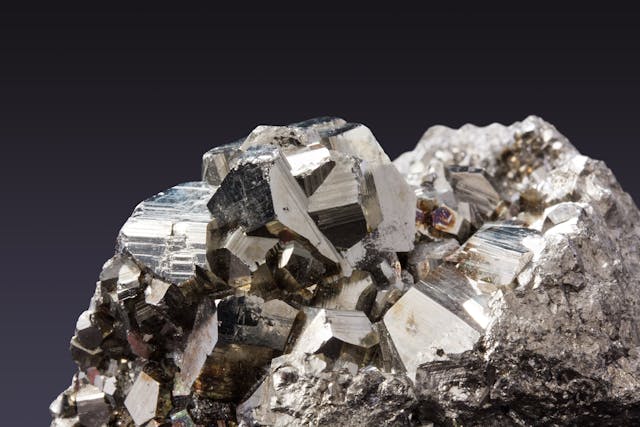
What is fool’s gold? It is most commonly pyrite, which has a similar appearance to gold.
The expression “fool’s gold” came into existence in the 1820s. The knowledge that there were other metals that looked like gold has probably been around for centuries, but it was only in the 1820s that gold rushes became a thing. Gold prospectors would come looking for gold and they would find pyrite, which looks like gold, and think they had found gold. After a while, it became known as “fool’s gold” because only a fool would think that it was gold. Gold has been mined for thousands of years, but the concept of a gold rush is fairly recent. The very first gold rush was in 1799 in America, but gold rushes didn’t really become a common thing until the 19th century. That is because communications and transportation had to evolve to a point where people could hear about a gold find and travel to it in a reasonable amount of time. Before the telegraph, the railway, and steamships, by the time people heard about a gold find, the gold would probably all have gone, and even if it hadn’t, they couldn’t get there in time.
There is a story that Fool’s Gold was named after Queen Elizabeth I of England, but I can’t find any actual proof of it. A British explorer called Martin Frobisher and his acquaintance Michael Lok sailed to North America. They wanted to found a settlement and mine for gold, but they couldn’t find any real gold. They believed it was there, they just needed money. They found fool’s gold, a form of pyrite, and took it back to Queen Elizabeth in England. She was convinced they had found gold and funded their voyages. I cannot find if this is true and most dictionaries list the 1820s as the first use of the expression.
There are three minerals that are called fool’s gold. They are pyrite, chalcopyrite, and weathered mica. The most commonly found of these three is pyrite, so let’s concentrate on that. Pyrite is iron sulfide. It is formed at the bottom of the oceans and therefore found in sedimentary rock. Iron comes out of rocks when they are weathered and forms iron salts. These are dissolved in water and flow into the sea where they settle at the bottom. The deposits are covered by organic matter and the bacteria that feed off the decaying matter create sulphide, which joins to the iron and forms crystals of iron sulphide. When the oceans dry up, or the sea beds are raised up by the tectonic plates, the sedimentary rock and the pyrite are brought to the surface.
Pyrite is a Greek name and it comes from pyrites lithos, which means “the stone that strikes fire”. When it is struck, it produces sparks and was used as a fire lighter by ancient people. In more recent times, it was used in early firearms, before a better substitute was found. Pyrite is a very hard mineral and has a wide range of uses. It is a semiconductor and has been used in lithium batteries. It is used to produce sulphur dioxide for the paper industry. It has been used as solar panels, and it has been used to make cheap jewelry, amongst other things.
We are looking at it because of its resemblance to gold. If it is sunny, pyrite can reflect the sunlight and look vaguely golden and sparkly, just like real gold. Pyrite is very common, far more common than gold, and someone who came across some pyrite might believe they had found a huge amount of gold. However, despite its initial resemblance to gold, pyrite has a lot of differences to gold. Here are some of the differences. Gold is very durable, but pyrite is very brittle. Pyrite turns green when oxidized, gold doesn’t change color. When you poke pyrite with a knife, it will flake or crumble. When you poke gold with a knife, it will indent because it is soft. Pyrite may not be real gold, but it is certainly not worthless. Because of its many and varied uses, there is a big market in pyrite mining. China is the biggest exporter of pyrite at the moment. In September 2024, 1 kg of pyrite is roughly $95. For comparison, 1 kg of gold would be $83,228. And this is what I learned today.
Photo by Pixabay: https://www.pexels.com/photo/white-stone-56030/
Sources
https://uwaterloo.ca/earth-sciences-museum/resources/detailed-rocks-and-minerals-articles/pyrite
https://en.wikipedia.org/wiki/Pyrite
https://arts.onehowto.com/article/why-is-pyrite-called-fool-s-gold-13388.html
https://www.usgs.gov/faqs/what-fools-gold
https://en.wikipedia.org/wiki/Gold_rush
https://www.thermofisher.com/blog/mining/pyrite-the-real-story-behind-fools-gold
https://www.gemworld.com.au/products/moreInfo/401/4762/pyrite_rough_per_kilo
